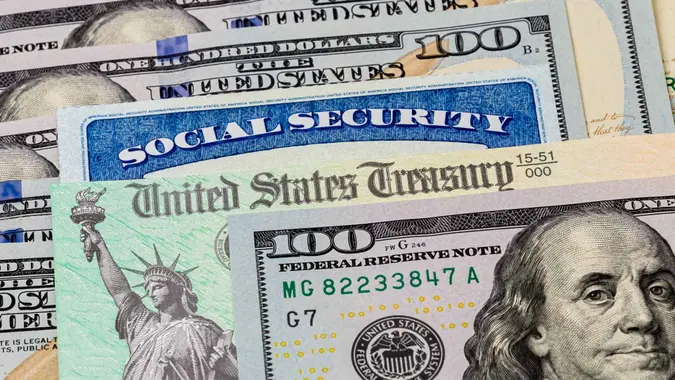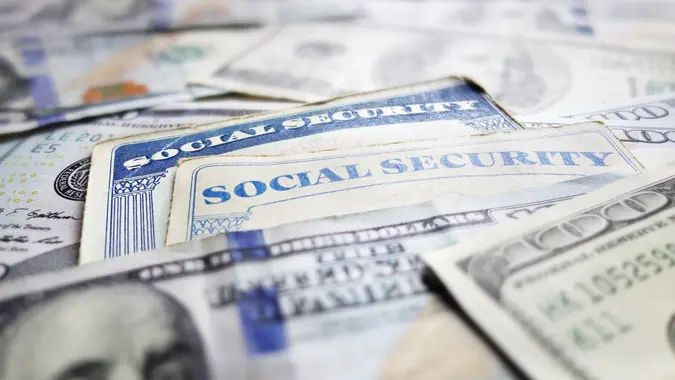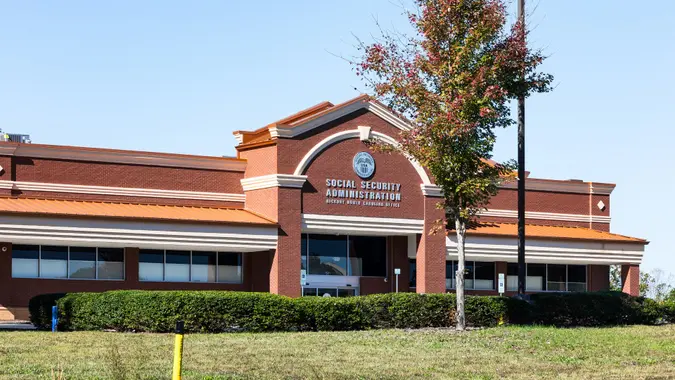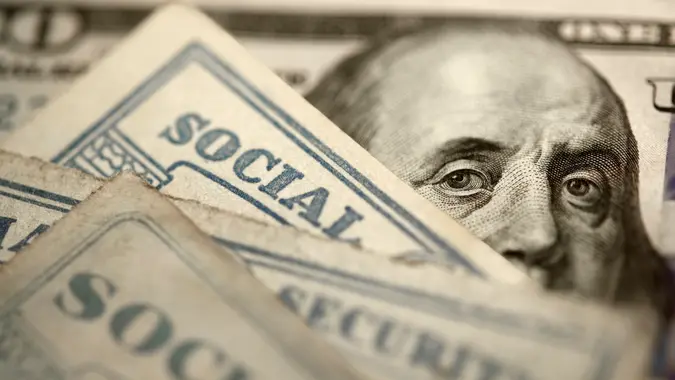Trump Said He’d Protect Social Security–Here’s What’s Happening So Far

Commitment to Our Readers
GOBankingRates' editorial team is committed to bringing you unbiased reviews and information. We use data-driven methodologies to evaluate financial products and services - our reviews and ratings are not influenced by advertisers. You can read more about our editorial guidelines and our products and services review methodology.

20 Years
Helping You Live Richer

Reviewed
by Experts

Trusted by
Millions of Readers
If there’s one thing that all politicians seem to agree on, it’s that they “must protect Social Security.” You’d be hard-pressed to find any politician who hasn’t made that or a similar statement at some time, especially when running for office. But as always in politics, the hopes and dreams of politicians, even if genuine, don’t always play out the way they intend in the real world.
President Donald Trump is no different than other politicians in this regard. In late Aug. 2025, for example, ABC news quoted Trump as saying, “One thing I said and I gave my word — we’re not going to hurt anybody on Medicaid, Medicare or Social Security.”
Here’s a look at how Trump’s actual policies have impacted Social Security recipients.
Administrative Reorganization
One of the first moves that the Trump Administration made that affected Social Security was a wide-reaching governmental reorganization. First, the newly created Department of Government Efficiency, popularly referred to as DOGE, began a campaign of cost-cutting that reached all the way to the Social Security Administration. Under plans floated by the government, more than 7,000 SSA workers would be laid off. According to the Center on Budget and Policy Priorities, this would amount to the largest staffing cut in the history of the SSA.
This announcement follows one made earlier in 2025, which would require many Social Security applicants to verify their identity in person at field offices, rather than over the phone. This was described by the SSA as a way to strengthen identity verification.
Perhaps the biggest move was when Frank Bisignano, the commissioner of the Social Security Administration, was appointed to head the Internal Revenue Service as well. CNBC reported that this move caused some controversy. The news outlet quoted Nancy Altman, president of Social Security Works, as saying, “The reason it’s never happened in the history of the country is because there are two separate positions for very good reasons.”
Treasury Secretary Scott Bessent has defended the move as a way to modernize and stabilize both agencies, as the IRS and SSA “share many of the same technological and customer service goals,” according to a Treasury Department press release.
Changes in Tax Policy
Trump’s “One Big Beautiful Bill Act,” signed into law in July 2025, had a direct effect on Social Security for recipients. One of the many components of the bill was a provision to eliminate taxes on Social Security benefits for roughly 90% of beneficiaries. The SSA dubbed this “meaningful and immediate relief” for retirees.
While this seems like a major plus for Social Security, it may be a case of short-term gain for longer-term pain. According to the Congressional Office of the Chief Actuary, this tax relief could potentially speed up the projected date of insolvency for the Social Security Trust Funds.
Changes in Disability Policy and Qualification
One potential change to Social Security that has flown a bit under the radar is the tightening of eligibility for Social Security Disability Insurance, or SSDI. According to the Washington Post, the Trump Administration is floating a proposal to eliminate age as a factor in determining if someone is eligible to work. If accurate, this change could reduce the number of people receiving benefits by 10%, translating to roughly 750,000 becoming ineligible for benefits over the next decade. These projections were made by Jack Smalligan, a senior policy fellow at the Urban Institute and a former Office of Management and Budget official through five administrations.
The Center on Budget and Policy Priorities also reports that nearly 400,000 beneficiaries could see their SSI benefits reduced due to provisions in the OBBBA. This would come in the form of the reversal of an expansion put into place under the Biden Administration. The Office of Management and Budget describes the proposal as “Rescission of Changes to the Definition of a Public Assistance Household” by removing the Supplemental Nutrition Assistance Program (SNAP) from the list of public income maintenance (PIM) payments.
The Bottom Line
The Trump Administration appears to be walking the fine line between upholding the President’s pledge to protect Social Security with his desire to cut costs. This is a problem that has plagued every recent presidential administration, so the ongoing debate is nothing new.
However, as most of these cuts and changes have yet to be ironed out in terms of details or how exactly they will affect benefit recipients, the jury is still out. As with most legislative changes, there will likely be both winners and losers over the long run, with different perspectives on whether the changes are good or bad.
More From GOBankingRates
 Written by
Written by  Edited by
Edited by 
























